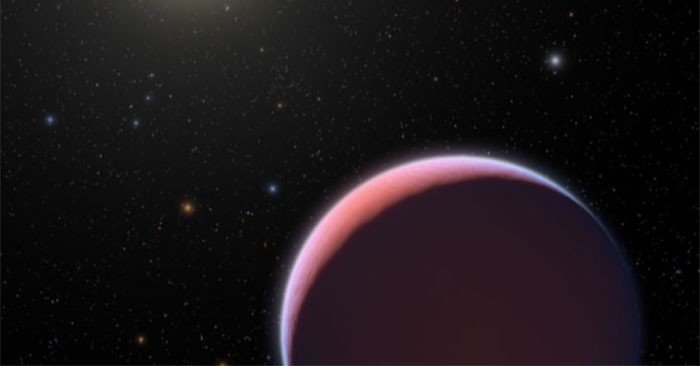The Best Diets for Heart Health

In addition to regular exercise and not smoking, diet is one of the best ways to protect your heart. Here are the best diets for heart health.
Astronomers have discovered a strange planet, giant in size but the second-lowest density ever found by astronomers. The newly discovered celestial body, called WASP-193b, has a density of only 0.059 grams of matter per cubic centimeter, equivalent to… a cotton candy.
The density of matter on WASP-193b is equivalent to 1/7 of the mass of Jupiter . You may not know, Jupiter is 50 times larger than Earth, but the density of matter is only about 1% of Earth.

Professor Julien de Wit from the Massachusetts Institute of Technology, co-author of the study, said the planet is so light that it is difficult to compare it to a mass of matter. And it is made up mainly of air, so light as cotton that it has been compared to cotton candy.
WASP-193b is located about 1,181 light-years from Earth and was first discovered in 2023 by the Wide Angle Search for Planets (WASP) project.
The study found that WASP-193b takes 6.2 Earth days to orbit a star the size of the Sun, at a distance equivalent to 7% of the distance from Earth to the Sun. WASP-193b completes one rotation every 6.2 Earth days.
Astronomers say WASP-193b is “light as a feather” because its mass is equivalent to 0.139 times that of Jupiter, but it is 1.5 times larger than Jupiter. In terms of density, WASP-193b has 0.059 grams/cm3, Jupiter has 1.33 grams/cm3, and Earth has 5.51 grams of matter per cubic centimeter of space.
So WASP-193b is comparable to a cotton candy or a disposable Styrofoam cup.
WASP-193b is the second-lowest-density planet ever discovered, behind Kepler-51d, which is much smaller, said study co-author Khalid Barkaoui.
Researchers believe that WASP-193b is made up of hydrogen and helium, but they have not yet explained why WASP-193b is so large.
In addition to regular exercise and not smoking, diet is one of the best ways to protect your heart. Here are the best diets for heart health.
Diet is important to our health. Yet most of our meals are lacking in these six important nutrients.
At first glance, AirPods look just like any other true wireless earbuds. But that all changed when a few little-known features were discovered.
In this article, we will guide you how to regain access to your hard drive when it fails. Let's follow along!
Dental floss is a common tool for cleaning teeth, however, not everyone knows how to use it properly. Below are instructions on how to use dental floss to clean teeth effectively.
Building muscle takes time and the right training, but its something anyone can do. Heres how to build muscle, according to experts.
The third trimester is often the most difficult time to sleep during pregnancy. Here are some ways to treat insomnia in the third trimester.
There are many ways to lose weight without changing anything in your diet. Here are some scientifically proven automatic weight loss or calorie-burning methods that anyone can use.
Apple has introduced iOS 26 – a major update with a brand new frosted glass design, smarter experiences, and improvements to familiar apps.
Yoga can provide many health benefits, including better sleep. Because yoga can be relaxing and restorative, its a great way to beat insomnia after a busy day.
The flower of the other shore is a unique flower, carrying many unique meanings. So what is the flower of the other shore, is the flower of the other shore real, what is the meaning and legend of the flower of the other shore?
Craving for snacks but afraid of gaining weight? Dont worry, lets explore together many types of weight loss snacks that are high in fiber, low in calories without making you try to starve yourself.
Prioritizing a consistent sleep schedule and evening routine can help improve the quality of your sleep. Heres what you need to know to stop tossing and turning at night.
Adding a printer to Windows 10 is simple, although the process for wired devices will be different than for wireless devices.
You want to have a beautiful, shiny, healthy nail quickly. The simple tips for beautiful nails below will be useful for you.













